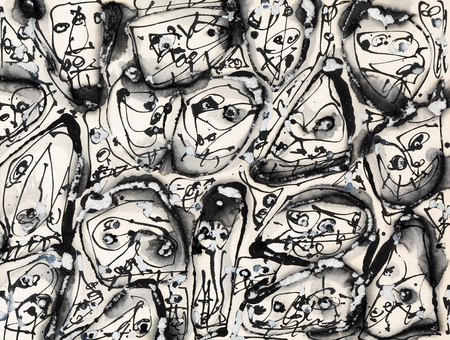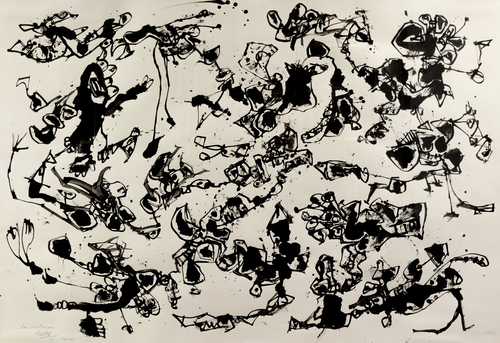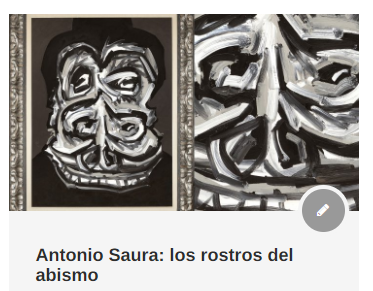The multiple faces of Antonio Saura
The artist, who was recognized as one of the great introducers in Spain of abstract expressionism and gestural informalism, once again becomes an exceptional protagonist of our auction, this time with one of his most recognized series: Mutations.
The importance of Antonio Saura in the renewal of Spanish post-war art is clearly unquestionable. In addition to the unavoidable influence of American abstract expressionism and French informalism, the tragic substratum that pervades each and every one of his works hides numerous references rooted both in the wild vein of Spanish painting and in European Nordic expressionism.
In this sense, Saura approaches the creative act from a more visceral side, close to that of his admired Pollock. In them the pictorial gestures reach an absolute liberation where the frenetic and nervous strokes crowd the surface of the work. However, Saura’s work does not develop in pure abstraction, but rather, supported by certain figurative elements, the artist confronts the great themes of humanity that are the backbone of his work. Undoubtedly, and as we see in the ink on paper belonging to his “Mutations” series, the backbone of his work was always the human figure and, very specifically, their faces and heads, which, starting from the figurative substratum, he subjected to a radical transformation associated with the gestural painting of the “Mutations” series. action paiting and informalism. Through the strident features, which by means of frenetic strokes break the limits of the face, Saura reveals a heartbreaking portrait of a society that, stripped of its identity, is consumed in a world in perpetual contradiction and decadence.
In fact, all of its most emblematic series draw directly from some of the most significant artists who anticipated and elevated the expressionist aesthetics and philosophy to the highest levels. turning his work into an authentic parade of an endless number of mutilated and distressed aberrant characters that, as his admired Goya, Munch or Ensor did, show us the monstrous side that resides in every being.

“Multitude”, 1970
Lot awarded at Setdart
Since 1956, when the first head appeared in his paintings, it became one of his signs of identity, completely conditioning the development of his own universe full of eyes, faces, signs and violent strokes that become a true catalog of the obsessions, passions and fears that Saura faced with brutal honesty. Their deconstructed or variegated heads, fused in a somber atmosphere reduced to black and white tones, are rooted in Goya’s Black Paintings and Munch’s frightened characters. who, respectively ahead of their time and analyzing their own, showed the reality of a century that would go down in history as the century of horror. In a continuous process of construction and destruction that defines the image, Saura took up the baton of both artists, representing the alienation of the human being in faces that, diluted, mutilated and transfigured, become both victim and executioner of the disasters that occurred throughout the twentieth century. In short, Saura’s faces stand as the symbol par excellence of the unbridgeable abyss to which humanity is heading.
In short, the monstrous characters of Goya, Munch and Saura shout the same lesson: if they take away our identity, they take away everything, even our humanity. This is the great learning that Goya, in his lucid and torn vision of humanity, brought to modern art. Because the human condition is implicit in the condition of a monster, two sides of the same coin that in the 20th century became an incontestable truth that Goya anticipated and in which Saura projected the stark reality of a world in decline.






